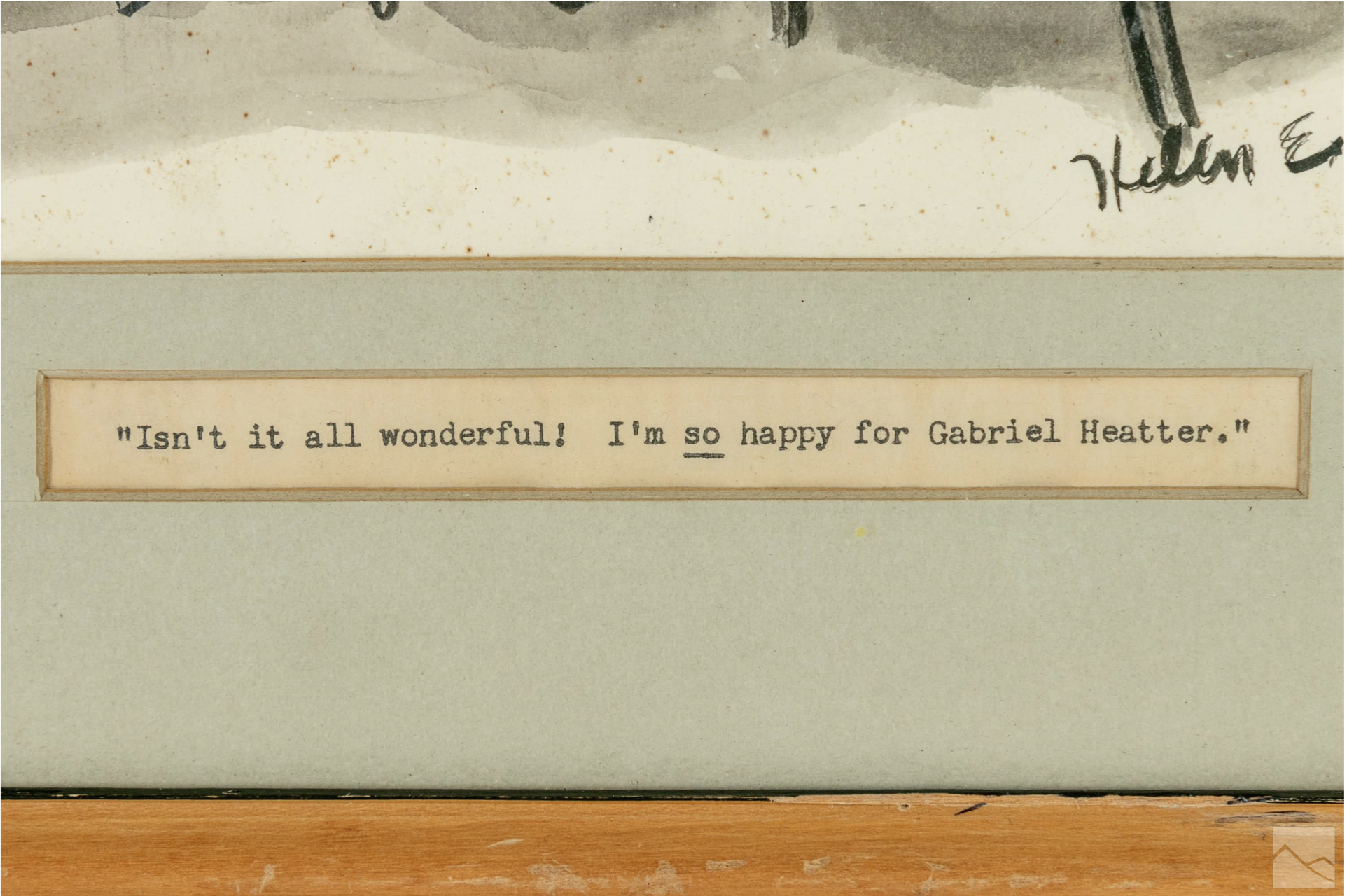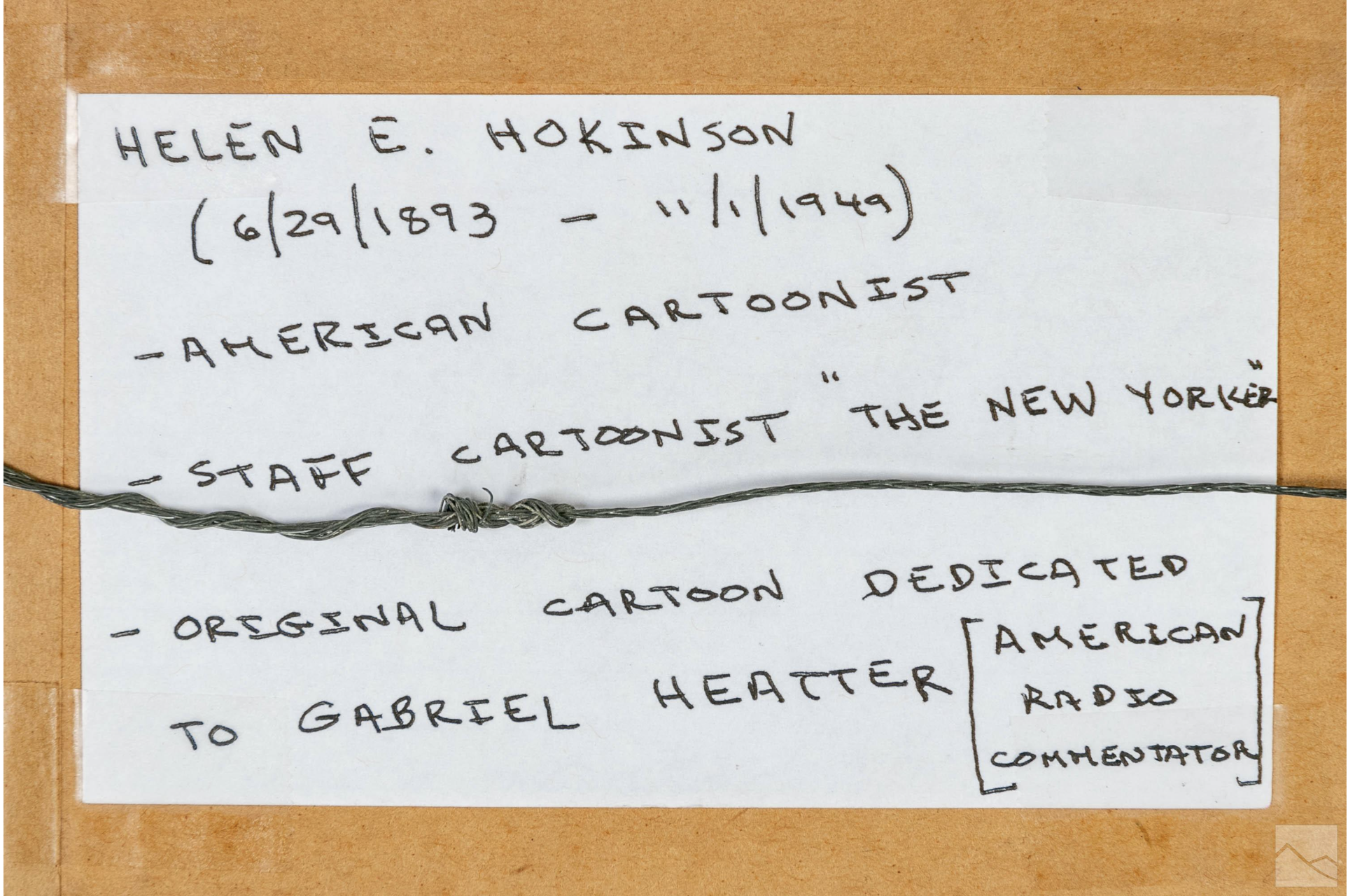These days the news is relentless. Many of us use our televisions, computers, and mobile phones to keep ourselves updated throughout the day.
During World War II, Americans had an urgent need to keep up with the news as well. Moving images of war were available in the cinemas through newsreels. Detailed print articles abounded in a wide variety of newspapers. But for the latest breaking news, there was nothing as immediate as radio. Commentators over the air waves like Gabriel Heatter became familiar names even before the war:
 |
| "Gabriel Heatter sounded an ominous note as I rounded a curve." George Price The New Yorker, July 6, 1940, p. 21 |
Weekly magazines like The New Yorker were an excellent source of news too. They could analyze the events of the week in great depth while providing perspective and thoughtful writing. The New Yorker in particular, with its talented stable of artists, could also take a step back and comment on how we consumed the various news media, as with the George Price drawing above.
The issue of November 14, 1942, is another case in point. A spot drawing in the movie listings highlights the experience of watching newsreels:
 |
| Spot drawing Victor de Pauw The New Yorker, November 14, 1942, p. 8 |
While Saul Steinberg offers a humorous insight into newsstand behavior:
 |
| Saul Steinberg The New Yorker, November 14, 1942, p. 11 |
"There's good news tonight." The familiar voice of Gabriel Heatter, again, brought news of World War II to American families sitting by the radio. Before the war, George Price may have had him sounding "an ominous note," but Heatter's wartime broadcast was known for its hope and optimism. That brought him popularity, although it brought him some jibes as well. Helen E. Hokinson's cartoon in the issue shows how her matrons related to the radio personality as if he were a personal acquaintance:
 |
| "Gabriel Heatter was every bit as surprised as I was." Helen E. Hokinson The New Yorker, November 14, 1942, p. 13 |
With V-E Day and Germany's surrender, Hokinson has occasion to return once again to the famous broadcaster. Her original cartoon art for The New Yorker was sold at auction just yesterday:
 |
| "Isn't it all wonderful! I'm so happy for Gabriel Heatter." Helen E. Hokinson Original art The New Yorker, May 5, 1945, p. 19 The paper has significant foxing. |
 |
| "Isn't it all wonderful! I'm so happy for Gabriel Heatter." Helen E. Hokinson Framed original art The New Yorker, May 5, 1945, p. 19 |
 |
| Typed caption |
 |
| Helen E. Hokinson Hill Auction Gallery listing accessed September 27, 2022 after the first absentee bid was placed |
 |
| "Isn't it all wonderful! I'm so happy for Gabriel Heatter." Helen E. Hokinson Framed original art The New Yorker, May 5, 1945, p. 19 |
 |
| A spot drawing and a cartoon by Helen E. Hokinson |
04092















No comments:
Post a Comment